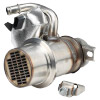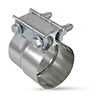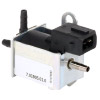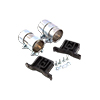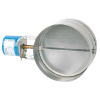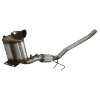
Lambda sensor VW POLO

Lambda sensor VW POLO models at best prices
- Polo V
- Polo 6R Lambda sensor 06/2009 - 06/2022 Car body type: Hatchback
- VW Polo 5 Saloon Oxygen sensor 05/2009 - ... Car body type: Saloon
- Polo IV
- VW Polo Mk4 Lambda sensor 10/2001 - 01/2012 Car body type: Hatchback
- VW Polo 9A4 Oxygen sensor 09/2002 - ... Car body type: Saloon
- Polo IV Saloon 9N4 Lambda sensor 09/2002 - 12/2010 Car body type: Saloon
- Polo III
- VW Polo 6N2 Lambda sensor 10/1999 - 10/2001 Car body type: Hatchback
- Polo 6n1 Oxygen sensor 10/1994 - 10/1999 Car body type: Hatchback
- Polo III Classic 6V2 Lambda sensor 11/1995 - 07/2006 Car body type: Saloon
- Polo III Variant 6V5 Lambda sensor 04/1997 - 09/2001 Car body type: Estate
- Polo VI
- Polo 6 Lambda sensor 06/2017 - ... Car body type: Hatchback
- Polo II
- Polo II Hatchback 86C, 80 Lambda sensor 10/1981 - 09/1994 Car body type: Hatchback
- Polo II Coupe 86C, 80 Lambda sensor 10/1981 - 09/1994 Car body type: Coupe
- Polo II Classic 86C, 80 Lambda sensor 01/1985 - 09/1994 Car body type: Saloon
- Polo II Van 86CF Lambda sensor 08/1992 - 07/1994 Car body type: Box
- Polo Vivo
- Polo Vivo Hatchback Lambda sensor 02/2010 - 09/2017 Car body type: Hatchback
- Polo Vivo Saloon Lambda sensor 02/2010 - 09/2017 Car body type: Saloon
- Polo I
- Polo I Hatchback 86 Lambda sensor 03/1975 - 09/1981 Car body type: Hatchback
- Polo Playa
- Polo Playa Lambda sensor 01/1995 - 11/2009 Car body type: Hatchback
Lambda sensor VW POLO: useful information
-
Parts recommended for simultaneous replacement as part of a service kit
- Engine oil
- Lambda Probe Set
- Retrofit Kit, catalytic converter
- Sensor, exhaust pressure
- Catalytic converter
- Mass air flow sensor
- Clamp, silencer
- Sensor, coolant temperature
- Spark plug
- Knock Sensor
- Throttle position sensor
- Crankshaft sensor
- Camshaft position sensor
- Ignition Cable Kit
- Exhaust pipe gasket
- Minimum price £ 67,00
- Maximum price £ 546,00
- p0171, p0430, p0303, p0172, p0174, p0301, p0302, p0304, p0305, p0306, p0155, p0421, p0410, p0135, p0031, p0134, p0030, p0130, p0131, p0133, p0141, p0138, p0136, p0037, p0137, p0036, p0140 -
Catalogue of manufacturers: O2 sensor VW POLO
O2 sensor VW POLO and other car parts Exhaust
Where can you find the lambda sensors in a Volkswagen Polo?
The location of these components depends on the engine type and the year of production. Most modern vehicles are fitted with two oxygen sensors. One of them is located in the exhaust manifold upstream of the catalytic converter and the second one downstream of it. This increases the measurement accuracy.
What are the types and how do they differ?
The following kinds of lambda sensors are available for Volkswagen Polo:
- Heated: these are the most common ones. They are three- and four-wire components that quickly heat up to the required temperature.
- Planar: these are made using zirconium dioxide and aluminium oxide. They are light and can heat up in 5-–30 seconds. They are also inexpensive.
- Titanium dioxide: these require a reference voltage to function. They are long lasting and highly accurate. However, they have a complex design and are expensive.
- Wideband: these are used in modern vehicles and have a wide measurement range. They can be four- or five-wire. They help ensure the correct air-–fuel ratio.
Can I install lambda sensors of different types in a Volkswagen Polo?
In some cases, when it is impossible to buy the required component, replacing it with a different one with similar characteristics is allowed. Please note that if your vehicle had a heated component, you cannot substitute it with an unheated one.
Replacing zirconium parts with titanium ones is not permitted either. They use different methods of measurement and data readout. Replacing one with the other could lead to poor engine performance.
What is the average service life of these components in this model? What are the most common causes of failure?
The service life of lambda sensors depends on an engine type and vehicle operating conditions. On average, components without a heating element last for 60,000–80,000 km, while heated last for 100,000 km. Planar sensors can cover a distance of 160,000 km. It is recommended to test the parts every 30,000 km.
These components can break down because of poor-quality fuel, a faulty ignition system, mechanical damage, and too much off-road driving. In addition, sensors fail if the oil-scraper piston rings wear out or antifreeze gets into the exhaust system.
What are the possible consequences of not changing lambda sensors in a Volkswagen Polo on time?
Driving a car with a faulty sensor leads to poor engine performance, increased fuel consumption, and poor dynamics. Exhaust emissions also increase, which is damaging to the environment.






















































